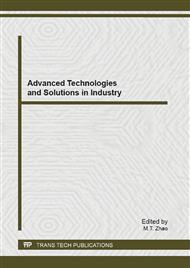p.348
p.352
p.358
p.362
p.367
p.372
p.376
p.385
p.390
Research of Hydration Hardening and Strength Development of Magnesium Oxychlorine Cement in Brine
Abstract:
In western region of China distributes a large area of high salt concentration of saline soil. Portland cement concrete used in underground facilities cannot satisfy the demand of lifetime, due to the severe corrosion of saline soil. Magnesium oxygenchlorine cement has perfect resistance to salt corrosion, but it is air-hardening material. There is not related research about the hydration, hardening and strength stability of magnesium oxygenchlorine cement in brine. In this research, the strength development regularity of magnesium oxygenchlorine cement which has different compositions, different ways of curing, and was soaked in different concentration of Golmud salt lake brine was studied. The results showed that the proper composition of magnesium oxygenchlorine cement could hydrate, harden, develop and maintain strength; the magnesium oxygenchlorine cement hardening in air could keep strength stability in brine.
Info:
Periodical:
Pages:
367-371
Citation:
Online since:
June 2013
Authors:
Keywords:
Price:
Сopyright:
© 2013 Trans Tech Publications Ltd. All Rights Reserved
Share:
Citation:


